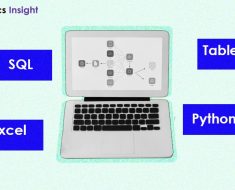(Jan 30): Deal makers are turning to artificial intelligence (AI) and generative AI tools to source data, screen targets and conduct due diligence at a time of heightened regulatory concerns around mergers and acquisitions (M&A), Bain & Co said in its annual report on the industry released on Tuesday.
While only 16% out of a total of 306 M&A practitioners surveyed by the advisory firm said they have relied on generative AI for past deal making, 80% said they expect to deploy it in the coming three years, highlighting the scope for potential changes to how companies do deals.
Both buyers and sellers will likely utilise generative AI, or self-learning models that can generate text, images and other content, said Suzanne Kumar, a vice president in Bain’s M&A practice and a co-author of the report.
“The longer-term question is whether companies will also use Gen AI for decision making,” Kumar said, pointing to a strong appetite among companies to incorporate the new technology into their processes.
Generative AI can pick up M&A targets that wouldn’t have been identified with traditional tools, flag deviations in contracts and help focus on problematic areas, the Bain report found. Technology, health care and finance companies are among the early adopters. “They tend to be larger companies with moderate M&A activity of three to five deals per year,” the firm said in its report.
Still, respondents voiced concerns around the reliability of data supplied by generative AI, as well as the safety of the tools that are available in the market.
Picking up
Bain said it expects deal making to pick up in 2024 following a 15% decline in total M&A to US$3.2 trillion (RM15.14 trillion) from the prior year, the lowest in a decade. Leveraged private equity- (PE) and venture capital-driven deals fell by 37% compared to 2022, while strategic M&A by corporate buyers including add-ons by PE-firms slowed by 6% from the prior year.
High interest rates, mixed economic signals, geopolitical uncertainty and the lack of common ground between sellers and buyers were behind the decline, Kumar said. “It often seemed to be the only thing that buyers and sellers agreed on, that they couldn’t agree on a valuation,” she said.
That has resulted in a backlog that is forecast to drive buying and selling of companies and assets in 2024, as private equity firms have held more than half of their portfolio businesses for more than four years. Following the slowdown in deal making in 2023, companies will likely take a hard look at their portfolio and consider divestitures, Kumar said.
Strategic deal makers in particular are set to do more M&A as they traded at a median valuation of 10.1 times their earnings before interest, taxes, depreciation and amortisation in 2023, near a 15-year low and down from 12.1 times in 2022. “Even on a historical basis, valuations are relatively low,” Kumar said, pointing to exceptions such as financial services, where valuations increased.
A potential decline in interest rates, as outlined by the Federal Reserve in December when it pencilled in 75 basis of cuts for 2024, also should help M&A. “When you are a chief financial officer, you have probably absorbed higher interest rates, and you see an opportunity to do deals at a lower price,” she said.
Still, heightened regulatory uncertainty is seen to continue, forcing companies to stress test their planned deals, negotiate termination fees and waterproof their financing plans, she added.
Companies in the first nine months of 2023 paid for 65% of deal values with cash, followed by 22% in stock, with the rest paid for with a combination of cash and stock. Compared with the first nine months of 2022, companies used slightly more stock to fund acquisitions. Bain said it doesn’t have data on how much of that cash was raised through debt.




